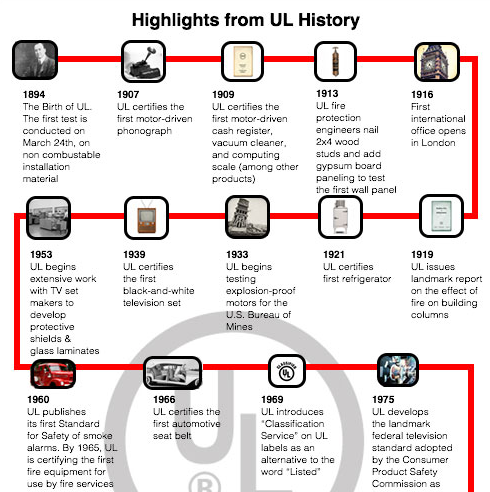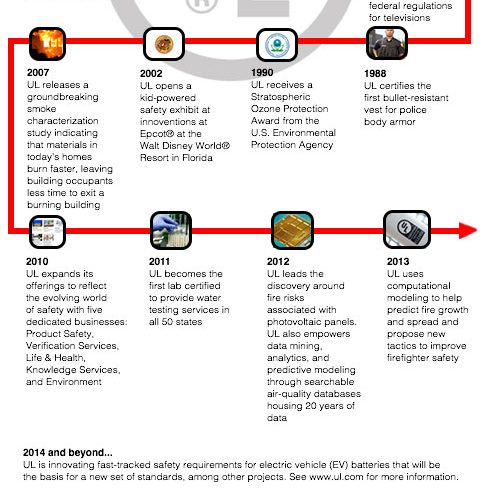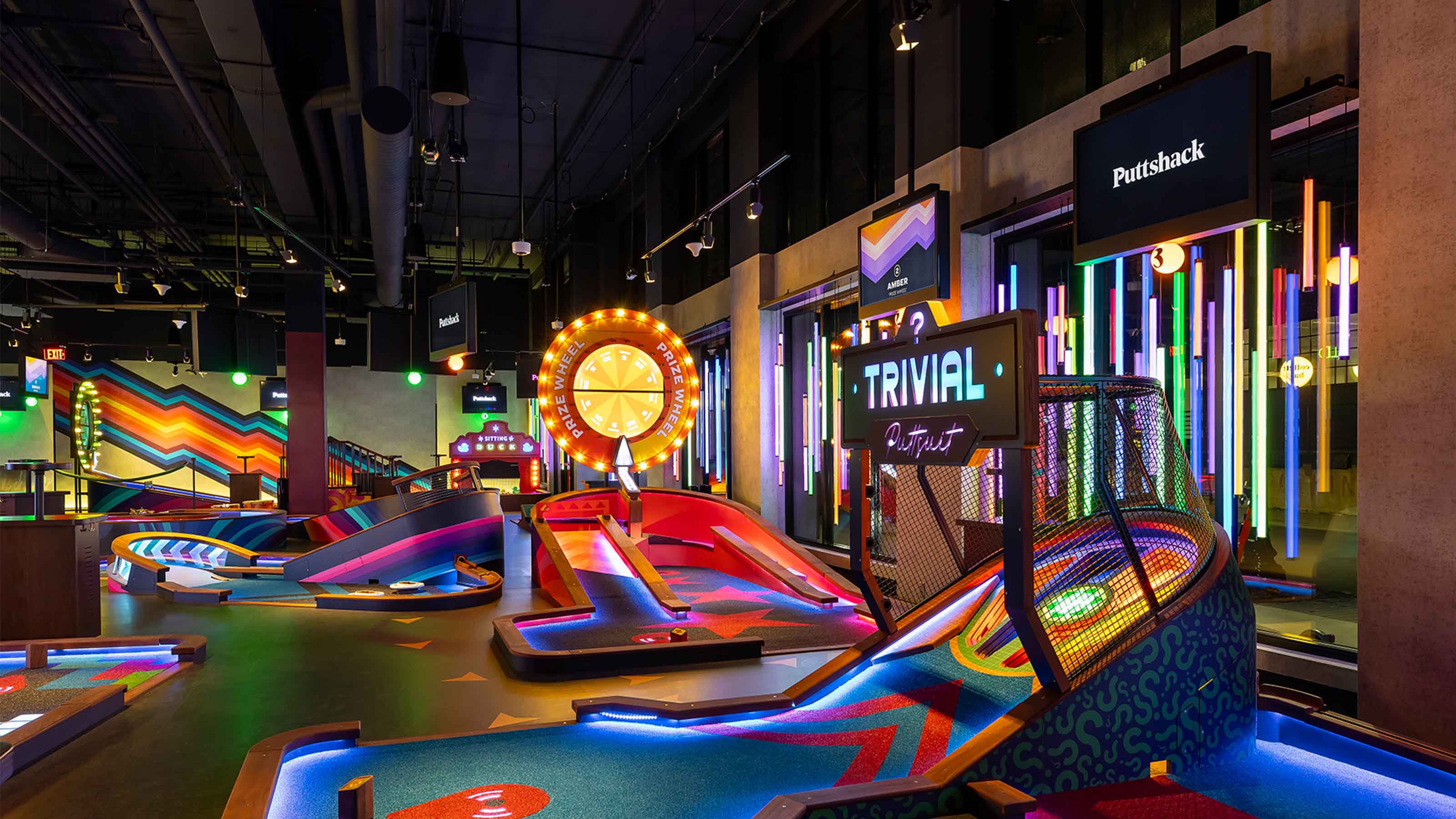Underwriters Laboratories Sets the Standard

Diving into the world of Underwriters Laboratories (UL) can be more overwhelming than trying to maneuver a shopping cart through Costco on a Saturday afternoon. It isn’t to say that there’s anything wrong with the UL website or their processes, there’s just so much information that it’s easy to get a bit lost. That’s why we’ve created this little cheat sheet on the details of UL standards for you. See it as your tour guide through the rabbit hole.
For starters, what IS Underwriters Laboratories?
The Underwriters Laboratories is an organization that provides product safety testing and certification. It was founded in 1894 by William Henry Merrill, under the name Underwriters’ Electrical Bureau. Today, it consists of over 21 billion UL Marks on more than 20,000 different types of products, and has offices in 46 countries worldwide. UL now stands as a benchmark that enables consumers, businesses, and regulators to feel confident about the products and services that they purchase.*
Why is a UL Listing relevant to an Audio Visual product?
AV products are everywhere, and considering the risk of personal injury as a result of electrical shock when we surround ourselves with a variety of these products, it’s an understatement to say that safety is pivotal in a quality product. For business as well as consumer end users, consider the liability of an unsafe product that could result in either personal injury or even legal action.
It’s only through meticulous testing and certification that you can rest assured the products you’re using in your AV system can optimally stand against the risk of, say, an electrical fire, or insufficient structural design. Since 2006, UL has conducted Field Evaluations on more than 25,000 pieces of electrical equipment. In those tests, over 50% of the products tested were deemed “deficient,” and required correction in order to bear the UL Field Evaluation Mark. The testing and certification process required to apply a UL Listing Mark is a rigorous examination that complies with nationally recognized safety standards, which is exactly why Premier Mounts has made it a priority to UL List hundreds of our products, including (but not limited to) our AM175 Swingout Mount, FTP Fine Tune Projector Mount, and MAG-PRO Universal Projector Mount.
Making sure our customer’s installations are safe and time-efficient are some of our top priorities, but it’s also important to ensure our products are made in a way that minimizes environmental and human care risks. Premier Mounts was one of the first mounting companies to adopt the Restriction of Hazardous Substances (RoHS), which restricts the use of six hazardous materials in the manufacture of various electronic and electrical equipment. We are also a Sony Green Partner, and produce our products to comply with Sony’s global environmental approach. Along with UL Listing, these steps help to assure that our products and practices consider the safety of our customers and the world around them.
A daily selection of features, industry news, and analysis for AV/IT professionals. Sign up below.
What Industries does UL serve?
Underwriters Laboratories work with a variety of audiences within product supply chains, including manufacturers, retailers, consumers, policy and other influencers, authorities, built environment professionals, and service companies.
UL currently serves 22 industry segments, including: Appliances and HVAC, Building Materials, Cleaning Products, Dietary Supplements, Energy and Industrial Systems, Fire Suppression, Food and Beverage, Furniture and Bedding, High-Tech, Jewelry and Watches, Life Safety and Security, Lighting, Medical and Laboratory, OTC and Pharmaceuticals, Personal Care and Beauty, Plastics and Components, Plumbing Products and System Components, Premiums/Promotional/Licensed Goods, Textiles/Apparel/Footwear, Toys and Juvenile Products, Wire and Cable, and Wireless.
Testing on these products varies based on requirements needing to be met. Commercial cleaning products, for example, are analyzed for their microbiological and physical properties to eliminate environmental and human health risks. WiFi devices are tested to confirm that claims of performance, conformance, and interoperability are met. Each test for these various industry segments is created to ensure ultimate safety, strength, quality, performance, and/or promotional claim validity.
In the 120 years since the initial testing, UL has expanded their horizons to a variety of solution divisions. Those solutions now include Continuous Improvement, Electromagnetic Compatibility (EMC), Environment, Global Market Access, Information and Insights, Knowledge Solutions, Responsible Sourcing, Transaction Security, and Workplace Health and Safety.
Who is responsible for the testing and certification of these products, and why are they credible resources?
UL is the largest and oldest nationally recognized testing laboratory in the United States, and uses its Standards Technical Panels (STP) process for consensus standards development, which has been approved by the American National Standards Institute (ANSI). An STP is a qualified group of individuals who represent a variety of interests connected to the product being tested. Each STP panel member must be officially approved through a process of applying to the group and abiding by the UL’s STP Member Code of Ethics. A list of STPs can be found on the UL website, and is organized by STP number, name, which standards the STP covers, and the STP Chairperson, Representative, and Project Manager.
What other resources can be found on the UL website?
The UL website is beautifully arranged to include a Dashboard, which can lead you to several other website tools (hence- the “rabbit hole” concept I mentioned in the beginning of this blog). Here, you can find icons leading you to:
- Library: A collection of UL research and insights showcased in journals, reports and white papers across a range of industries and subjects.
- Marks Hub: Information and tools to help you deploy the enhanced UL Marking and Badge.
- Services: A resource to dynamically search and sort UL’s catalog of services.
- Standards: Browse, filter and search a catalog of over 1,000 Standards.
“I really like Timelines. Can you show me how UL got to where it is today?”
You got it.

A history of Underwriters Laboratories.
*All information sourced from Underwriters Laboratories website, including timeline information and images. To see the complete UL history timeline, click here. For more information on any of these UL topics, please go to www.ul.com.
